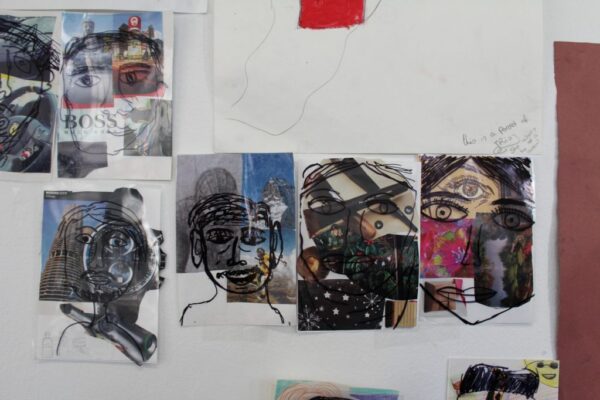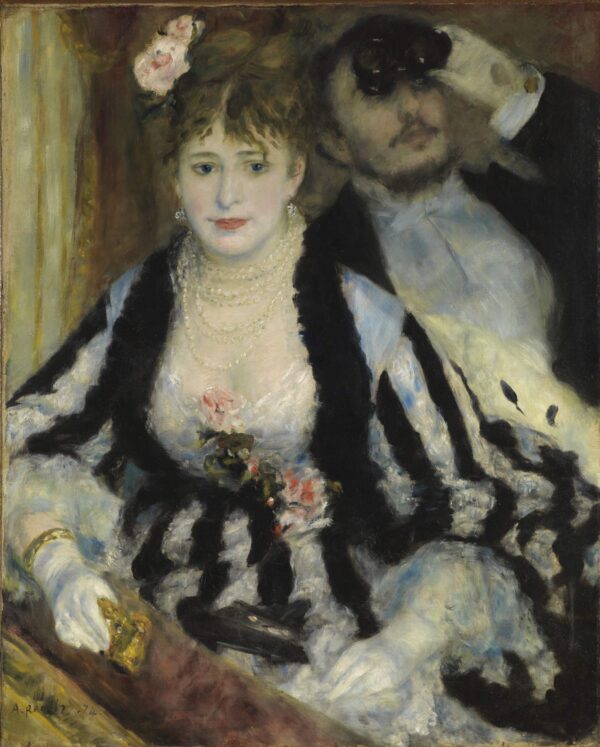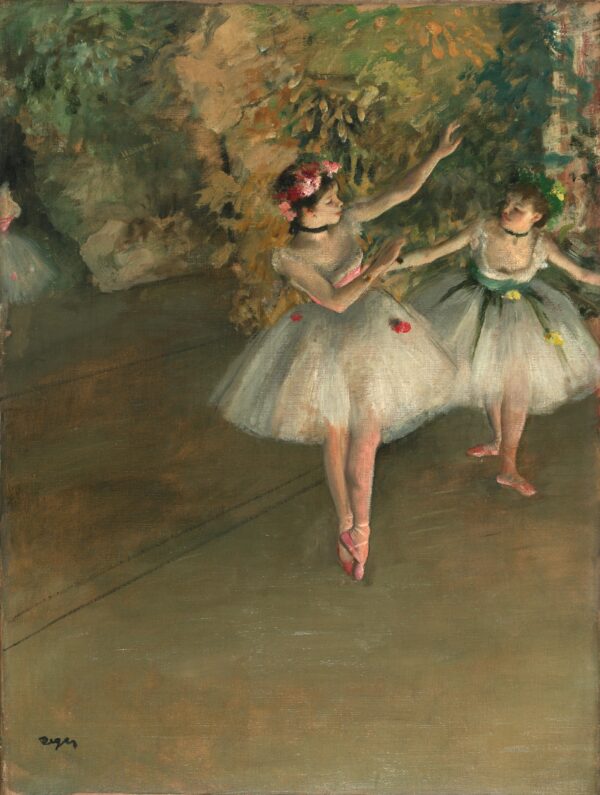This activity encourages learners to use adjectives to describe the sitter in a portrait. This activity is designed for individual learners using the worksheet and word bank, but learners may also find it useful to discuss their answers with a partner.
The word bank included in this activity can be used with any portraits in The Courtauld Collection, or in other museums and galleries. You will find a list of portraits in the Suggested Further Activities section below.

Key Information
In this self-portrait the artist Vincent van Gogh stands in his studio. He wears rough outdoor clothing and there is a bandage clearly visible on his ear. Behind him on the right we see an easel with a painting in progress. Behind him there is a print by Japanese artist Sato Torakiyo (from the 1870s), which he hung on his studio wall. This tells us about Van Gogh’s interest in Japanese printmaking, which was a major influence on his work.
This self-portrait was one of the first works Vincent van Gogh made when he returned home from hospital after an incident in December 1888, in which he allegedly cut own ear following an argument with his friend, the French artist Paul Gauguin.
In exploring this self-portrait we may wish to consider Van Gogh’s motivation behind painting it. Does it show a determination to continue to produce work despite his health issues? Was he using painting as a way to understand the emotions and turmoil he may have been feeling? Was it a statement about his interest in Japanese art and how it influenced him?
Suggested Further Activities
Mirror Self Portrait:
We know that Vincent van Gogh painted his self-portrait with the help of a mirror, because the bandage in his self-portrait appears on his left ear but the injury was to his right ear.
Ask learners to create their own self portrait, using a mirror. This could be a drawing or painting. Learners could use found images from magazines to create a collage background to add objects or symbols that represent their likes and interests.
Ask learners to describe their self-portrait. How did they make it? What does their self-portrait tell us about their personality, likes and interests? They could also write a short description about their artwork.
Ask learners to swap self-portraits with someone on another table. Have they learnt anything new about that person by looking at their self-portrait?
Describe a Pose:
For this activity either the teacher, or a student will recreate a pose from a portrait for the rest of the group to draw. Members of the group take it in turns to instruct the model how to pose. For example:
- Turn your head to the left/right
- Stand up/ sit down
- Look up/ down/ left/ right/ straight ahead
- Put your arm on the table
- Your left / right arm is too high / low
- Move your leg higher / lower
- Stay still / don’t move!
When the group are happy with the pose they should quickly sketch the model (around 3 minutes, or shorter if the pose is difficult to hold).
As an extension, you could keep the portrait a secret from the student modelling the pose, and ask them to guess which artwork they were, based on student’s instructions and drawings!
You could also try recreating a group portrait, giving students the opportunity to describe how the figures interact with one another.





